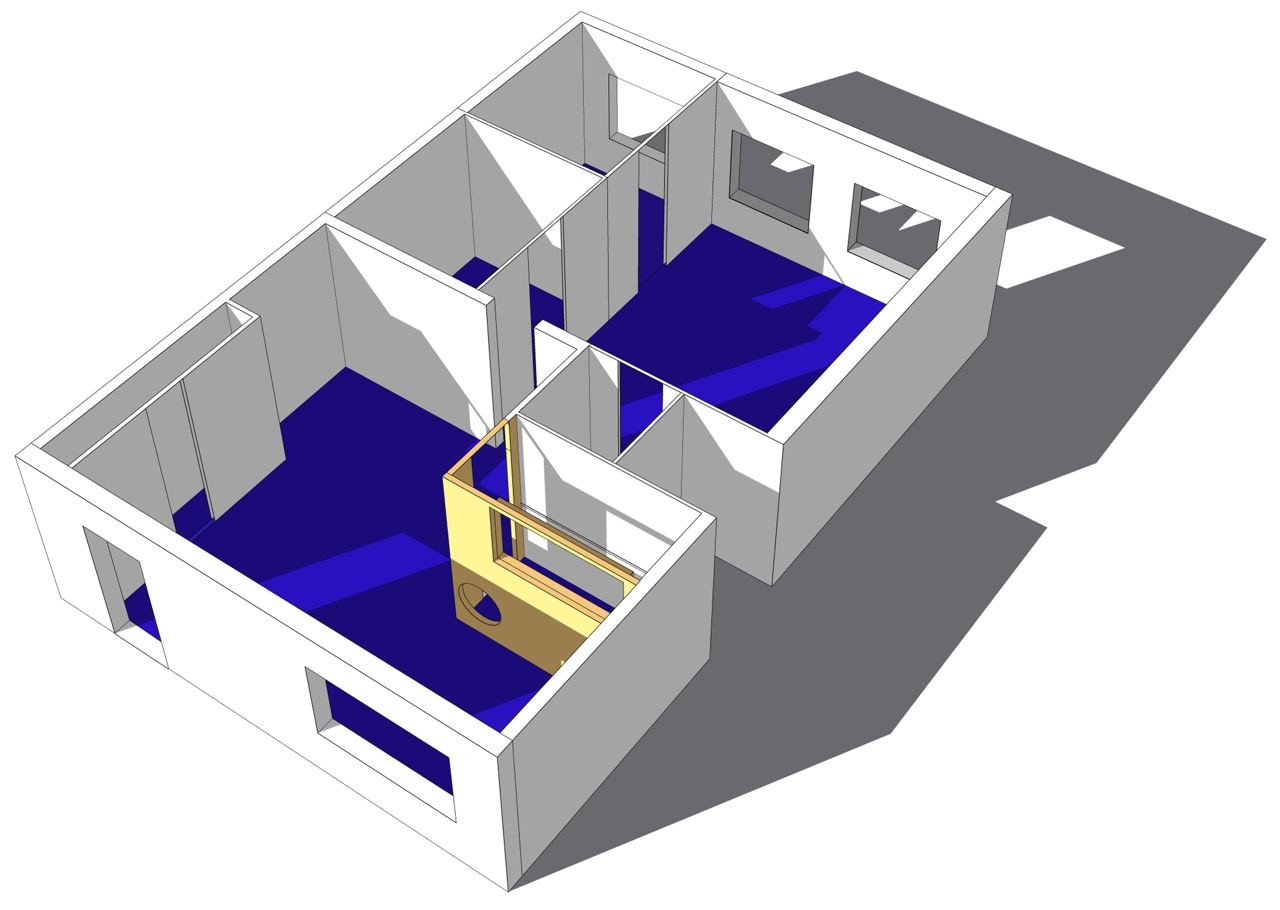
A rendering of A Space for Etc. by Karthik Palepu
Issue 3
Community of Agents
Issue 3
Community of Agents
No-one stands alone; we are all interconnected, entirely dependent on everyone and everything. With this in mind, how can we still be ourselves? How do we avoid becoming someone who is the same as all the rest, thus actually nobody? The third issue of Leida, Community of Agents, explores how to maintain, support and empower the capacity of parties involved in the design process not just to be themselves, but also to act as themselves. We do not need design that dictates how we should be, but design that would hear us out and help us understand how we already are and how to be better at it.
The design process should be grounded in the local, and stem from agency at the grass-roots level, which means cooperation with all the stakeholders – in addition to the target group, representatives of other fields and the local community, as well as different materials, media and associations. Whether we are dealing with the shared image which the residents of the Estonian town of Paide have of themselves, nanomaterials that are omnipresent though invisible to the naked eye, artificial intelligence that ends our unfinished sentences and disrupted thoughts, car-oriented streets in Tallinn, the inventiveness of Indonesian people, marginalised communities in Hungary, or Finnish influences in the design practice of Victor Papanek. All of these aspects, raised in the articles of the latest issue of Leida, play an important role in the design process. By opening up the design process to other parties in addition to the designer, one might ask what role is left to the designer. Who is the designer who belongs to a non-hierarchical actor-network in which all parties are bound by interactive relationships, as anthropologist Bruno Latour has put it?
A large part of design was never conformed with the predetermined framework of capitalist market rules and demands. Instead, it has been embedded in the practices of activists, artists, community developers, material scientists, DIY enthusiasts, as well as everyone else who solves everyday problems with handy tools. This kind of design has not grown out of desire but is rather based on need and meaning. For the designer, this presents a fundamentally important aspect in an increasingly connected and complex world – to create the ground for conditions that enable agency for all the parties involved. Leida’s current issue’s visual was designed by Karthik Palepu, MA student in graphic design, who made a rendering from a project space A Space for Etc. in Tallinn where various actors can function together, including the following authors.
In the opening story, the design historian Alison J. Clarke and curator Sandra Nuut meet on the occasion of the publication of the Estonian translation of Victor Papanek’s Design for the Real World, and discuss what was so radically different in Papanek’s approach to design that it still speaks to people across generations. In an interview with Taavi Hallimäe, the designer Bori Fehér calls for greater humility in designers. In his essay, the philosopher Eik Hermann highlights the need for explorations and wanderings based on legwork, without which manual and mental work would become impossible. The article by the graphic designers Else Lagerspetz and Loore Viires, alias Knock! Knock! Books, critically examines Tallinn’s public space and introduces character creation based on children’s literature as a way of interference. Designer Rifqi Fajri’s essay provides an overview of the Unconditional Design project found on Instagram, which brings together examples of design practices from different regions of Indonesia, where everyday problems are solved using handy tools. A conversation between community developer Dagmar Narusson, designer Daniel Kotsjuba and social design MA student Jan Teevet, moderated by Taavi Hallimäe, takes a look into different Estonian communities, working with them and the shifted position of the designer. Artist Kärt Ojavee and designer Annika Kaldoja share how the exhibition The Story of Nanomaterial No. 399 came about, and analyse the role of nanomaterials, artificial intelligence and electrospinning machines in the design process. Community of Actors is wrapped up in a visual essay by designer Oliver-Selim Boualam and art researcher Barbara Zoé Kiolbassa, which emphasises the need for connectors in product design, but also in human experience in general. Boualam and Kiolbassa remind us that although we don’t often pay attention to connections, and even hide them when possible, they hold the potential to change our perception of the world.
Even though the designer is just a link in a complex and seemingly endless community of actors, they are nevertheless a link that cannot act without having an overview of what is going on in different parts of the network – one gentle stroke in one corner of the network can bring about strong vibrations at the other end. To get an overview, we suggest starting with legwork, which could mean wandering around the streets of Tallinn or Jakarta, but also immersing oneself in different materials, communities or disciplines. Before hitting the road, however, take note of the recommendations given by Boualami and Kiolbassa and pack with you the affiliations that are able to create new connections or make the previously invisible connections visible.
Editor-in-chief
Taavi Hallimäe